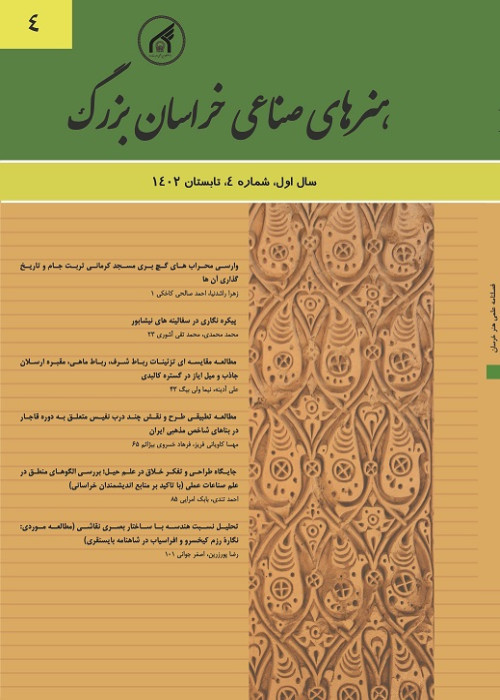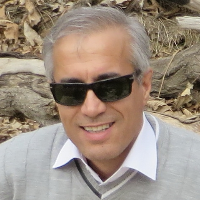The Comparative Study of the Characteristics of the Form and Motif of the Lustre Mihrabs and Stucco Mihrabs of the 6th Century to the Mid-8th Century AH in Kashan Based on the Works Kept in Astan Quds Razavi Museum in Mashhad
Author(s):
Article Type:
Research/Original Article (بدون رتبه معتبر)
Abstract:
From of the 6th Century to the Mid-8th Century AH, concurrent with Seljuk, Khwarazmian and Ilkhanid dynasties in Iran, Lustre and Stucco techniques reached their pinnacle. Since there were many famous tilers in Kashan during this period, this city was considered as one of the early pioneers in making lustre products in Iran. These techniques were mostly used in making the mihrabs most of which are now kept in different museums of Iran and other countries. Some of the most important of these mihrabs are in the Astan Quds Razavi Museum, which belongs to the shrine of Imam Reza. In addition to the lustre mihrabs, many stucco mihrabs were made that were used in the buildings with different functions some of which are located in Kashan. The goal of this research is to identify and analyze the structural and decorative features of lustre mihrabs in Kashan and compare them with the stucco mihrabs of the same region in order to highlight the continuity of artistic traditions over time and study the effects of the structural and decorative features of lustre mihrabs on the stucco ones in Kashan over a certain period of time. Therefore, the author tries to answer the following questions: what are the most significant structural features, designs, motifs and inscriptions of lustre and stucco mihrabs in Kashan attributed to 6th Century to the Mid-8th Century AH? How much are stucco mihrabs influenced by the contemporary or older lustre mihrabs in terms of structure and decoration? The data were collected through field research methods (photography, drawing linear designs of the images) and are based on written and online resources which were then analyzed using a historical-comparative method. The results of these studies show that the artists who have made the stucco mihrabs in Kashan have used older and contemporary traditions that had been often used in making and decorating the lustre ones. These artists were greatly influenced by the lustre mihrabs in terms of total congruence, the form of arch (angled triangle), number of arcades, the form of spandrels, number of half columns, the form of capitals (vase-like) as well as decorative features, including extensive use of dense, elegant and multi-layered plant motifs and limited use of simple geometric motifs.
Keywords:
Language:
Persian
Published:
Journal of Handicrafts of Great Khorasan, Volume:1 Issue: 2, 2023
Pages:
13 to 36
magiran.com/p2644819
دانلود و مطالعه متن این مقاله با یکی از روشهای زیر امکان پذیر است:
اشتراک شخصی
با عضویت و پرداخت آنلاین حق اشتراک یکساله به مبلغ 1,390,000ريال میتوانید 70 عنوان مطلب دانلود کنید!
اشتراک سازمانی
به کتابخانه دانشگاه یا محل کار خود پیشنهاد کنید تا اشتراک سازمانی این پایگاه را برای دسترسی نامحدود همه کاربران به متن مطالب تهیه نمایند!
توجه!
- حق عضویت دریافتی صرف حمایت از نشریات عضو و نگهداری، تکمیل و توسعه مگیران میشود.
- پرداخت حق اشتراک و دانلود مقالات اجازه بازنشر آن در سایر رسانههای چاپی و دیجیتال را به کاربر نمیدهد.
In order to view content subscription is required
Personal subscription
Subscribe magiran.com for 70 € euros via PayPal and download 70 articles during a year.
Organization subscription
Please contact us to subscribe your university or library for unlimited access!



